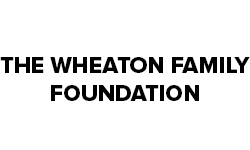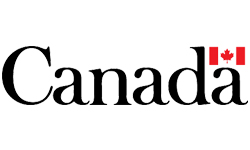GRADE 1 CITIZENSHIP STUDIES SELF, COMMUNITY, AND PLACE
Part A: Curricular Connections and Background
BROAD AREA OF CITIZENSHIP
In this area of study, students will examine the responsibilities that are inherent in all of these relationships. This area of citizenship invites students to act on issues that are explored so that they can move toward becoming justice-oriented citizens. Because this area of citizenship begins with self and exploring issues of citizenship it is the primary area of focus for primary and elementary students.
OVERVIEW AND DESIRED RESULTS OF CITIZENSHIP STUDY
Students will continue to learn about respect for themselves, others, and their environment. Students will learn to advocate for themselves and others, practice their skills of empathy, and appreciate that people have different points of view on the same topic. They will understand that opinions are developed through personal experiences and continue to practice skills of respect and find ways of dealing with differences of opinion.
Appreciation for national symbols of citizenship will be expanded.
An overarching goal of this year of study is for students to begin to understand the use of terminology to describe positions in space and time and the ways that maps and globes represent a variety of places and features of the earth and governance structures such as continents, countries, and provinces.
ENDURING UNDERSTANDINGS OF CITIZENSHIP STUDY
- Enduring understandings are the big ideas that stimulate thinking, guide the inquiry and are linked to outcomes.
- Essential questions point to the “big ideas’ in the inquiry and should be considered and reconsidered as the inquiry progresses.
- Answers to these questions form the evidence of learning at the end of study.
- Actions, behaviours, and relationships are learned and affected by the past.
- Events and ideas from the past influence the present and can influence and serve as models of how to live as a contributing citizen.
- People develop rules so that we can live together peacefully.
- Rules have differing levels of impact so people who make rules need to consider the individual good and common good.
- Diversity can have a variety of impacts and can impact points of view.
- Individuals have the power to affect others and make a difference.
- Canada has a long relationship with First Nations Peoples through treaty relationships.
- Decisions have far-reaching effects, so it is important to think about the choices we make.
- Active participation leads to belonging and symbols can support belonging;
- People are connected to each other and to their environment and have a responsibility to take care of the world.
KNOWLEDGE AND SKILL DEVELOPMENT
- Discriminate between needs and wants
- Recognize Canadian symbols – provincial and national
- Become aware of their thinking and develop and practice skills of empathy, advocacy
- Develop and practice skills of treating self and others with respect
- Develop conflict resolution skills
- Begin to develop positive environmental habits.
ESSENTIAL QUESTIONS
- How do needs differ from wants?
- How can symbols provide a sense of belonging and unity?
- What responsibilities do I have to my community?
- What responsibilities do I have to my environment?
CURRICULUM OUTCOMES AND INDICATORS
RW1.1
Describe the influence of physical, spiritual, emotional, and intellectual needs and wants on personal well-being.
Indicators:
- Review the difference between needs and wants.
- Illustrate ways in which other people’s needs may be different from one’s own.
- Share oral stories or traditional narratives on the theme of meeting various types of needs and wants (i.e., physical, spiritual, social/emotional, intellectual).
- Represent various ways in which families meet their physical, spiritual, emotional, and intellectual needs and wants.
- Explain how First Nations people engage traditional teachings in meeting needs and wants (e.g., Medicine Wheel representation for the domains of spiritual, emotional, physical, and intellectual being).
- Identify ways in which respecting others’ needs and wants helps classrooms and homes function effectively.
RW1.2
Discuss ways in which work may be managed and distributed in families, schools, and groups.
Indicators:
- List a variety of types of paid and unpaid work, and identify those people who undertake this work (e.g., caregiver/parent gets paid to work outside the home but not for coaching the soccer team; caregiver who volunteers to make hotdogs for the hotdog sale is not paid, person who runs the hotdog stand at the park is paid).
- Identify various domestic tasks that might contribute to operating and maintaining a home, and identify individuals who take primary responsibility for those tasks in students’ families.
- Suggest ways in which tasks may be shared in families.
- Identify those tasks necessary for the operation and maintenance of the classroom and school, and identify the individuals who take primary responsibility for those tasks in the school.
- Describe ways in which students can contribute to the operation of the home and classroom.
IN1.3
Assess ways in which relationships help to meet human needs.
Indicators:
- Identify human needs.
- Identify the groups to which individuals belong, and the needs met by membership within a group (e.g., family, class, team, activity, or faith group).
- Compare how various groups, including family, classmates, friends, and significant adults within students’ lives, contribute to meeting needs.
- Illustrate relationships that could meet needs in a fashion similar to a family relationship (e.g., Treaty, business partnership, team membership).
DR1.3
Demonstrate awareness of human’s reliance on the natural environment to meet needs, and how location affects families in meeting needs and wants.
Indicators:
- Identify sources of food common in students’ meals (e.g., plants, mammals, fish, birds, animal products like milk, cheese, and eggs).
- Investigate the process of getting food from source to students’ tables.
- Trace the geographic origins of food products consumed by students.
- Explain the contribution of the natural environment to the satisfaction of basic human needs.
- Retell stories that explore the relationship between humans and nature.
- Identify ways in which use of resources to meet needs and wants of individuals affects the natural environment, and recognize individual and group responsibility towards responsible stewardship of the natural environment.
Overarching Outcomes and Indicators
DR1.4
Recognize globes and maps as representations of the surface of the Earth, and distinguish land and water masses on globes and maps.
Indicators:
- Compile a list of various types of models used as representations of real things (e.g., toys, dolls, action figures, figurines, pictures, diagrams, maps).
- Identify general characteristics of maps and globes as models of all or parts of the earth, including reasons why certain colours are used to depict particular physical features.
- Use a globe to identify the location of places of origin for items found in the classroom and school.
DR1.5
Identify and represent the orientation in space (where) and time (when) of significant places and events in the lives of students.
Indicators:
- Identify Saskatchewan as our province and Canada as our country, and give examples of other provinces and other countries.
- Locate Canada, and the relative location of Saskatchewan, on a globe.
- Locate Saskatchewan and the relative location of the community of the school on a map of Canada.
- State the address or describe the relative location of students’ homes in the community.
- Use relative terms to describe location (e.g., above, below, near, far, left, right, front, back, in, out).
- Describe the relative location of places in the classroom and school neighbourhood.
- Construct and use maps to represent familiar places, such as the location of the student’s desk, part of the classroom or playground, incorporating the cardinal directions (i.e., north, south, east, and west).
© 2024 Concentus Citizenship Education Foundation Inc. All Rights Reserved.









